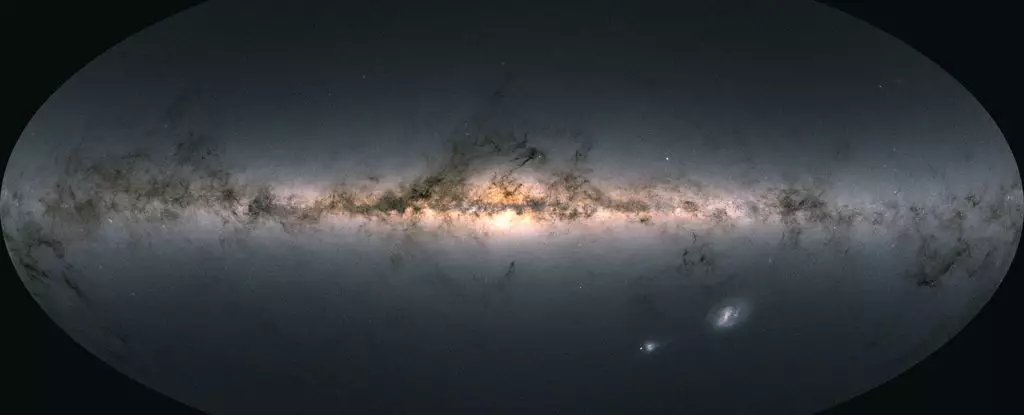Recent astronomical observations have unveiled tantalizing evidence suggesting the presence of a gigantic black hole lurking within the Large Magellanic Cloud (LMC), a dwarf galaxy in close proximity to the Milky Way. This black hole has been estimated to possess a mass approximately 600,000 times that of our Sun. The implications of this finding stretch far beyond academia; as the LMC is on a collision course with our own galaxy, the addition of this massive object to our celestial mix could radically reshape our understanding of black hole formation and evolution.
Historically, black holes have been an object of intrigue among astrophysics enthusiasts, primarily due to their enigmatic nature. They are notoriously hard to detect because they emit no light on their own, necessitating innovative observational techniques. Discovering a black hole of significant mass that is not part of the more frequently studied supermassive variety requires scientists to think outside traditional parameters.
The study of the black hole’s possible existence hinges on the concept of hypervelocity stars—objects that travel at exceptionally high speeds, often far exceeding their peers in the galaxy. Astronomers have posited that these stars may serve as indirect indicators of the gravitational influences exerted by hidden black holes.
This concept stems from a process known as the Hills mechanism, which describes a three-body interaction that can force a star to be ejected from its original location at incredible velocities. In the case of the LMC black hole, researchers led by astrophysicist Jiwon Jesse Han conducted a meticulous analysis of hypervelocity stars using data from the Gaia space telescope. The analysis included tracking the kinematic data of these stars, allowing the research team to backtrack to their points of origin and identify the potential gravitational influences at play.
Among the 21 hypervelocity stars analyzed, 16 were traced back successfully, revealing that nine originated from the LMC. This correlation suggests that their accelerated movement can indeed be attributed to the gravitational effects of a massive, yet hidden, black hole.
As the scientific community continues to scrutinize these findings, the potential consequences of a merging trajectory between the LMC and the Milky Way take center stage. Current models estimate that this collision will occur in roughly 2 billion years. When the two galaxies converge, it’s likely the black hole from the LMC will migrate toward the Milky Way’s center, ultimately merging with Sagittarius A*, the supermassive black hole that currently reigns at the heart of our galaxy, which has a mass of about 4.3 million solar masses.
Such an amalgamation could further fuel our understanding of black hole growth. The merging process stands as a testament to the dynamic and ever-evolving cosmos, where interactions lead to the formation of even larger gravitational titans. For researchers, this presents the fascinating possibility of observing a genuine example of cosmic evolution—a black hole growing through galactic collisions and mergers.
The significance of discovering a black hole of this caliber within our galactic vicinity cannot be overstated. If confirmed, it would not only provide crucial insights into the formation mechanisms of large black holes but also challenge existing models that have largely centered around supermassive black hole phenomena. The discovery may also yield a new category of intermediate-mass black holes, which are hypothesized to exist but remain elusive in current observations.
Future research endeavors will focus on confirming the existence of the proposed black hole in the LMC and deepening our understanding of its properties. This could involve a combination of observational astronomy and theoretical modeling. Scientists would likely aim to engage advanced telescopes and satellite missions dedicated to mapping the motions of celestial objects more comprehensively than ever before.
As we peer deeper into the cosmos, the quest for knowledge serves as a reminder of our place within the vast universe. Cosmic collisions, highly energetic phenomena, and mysterious dark matter are all components of a grand narrative waiting to be unraveled. Though we may not stand witness to the complete evolutionary cycle of these black holes, each new discovery brings us one step closer to understanding the intricate tapestry of the universe.



Leave a Reply